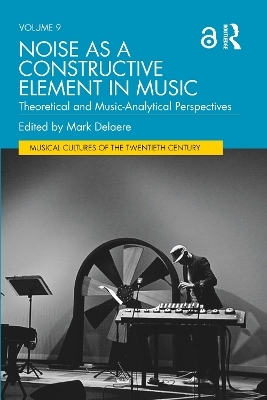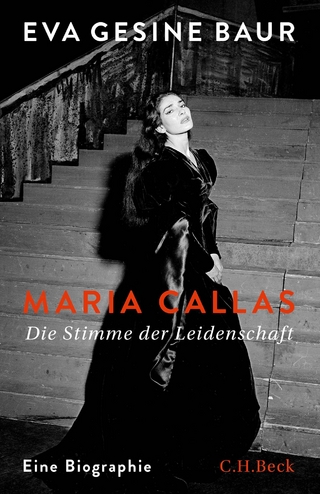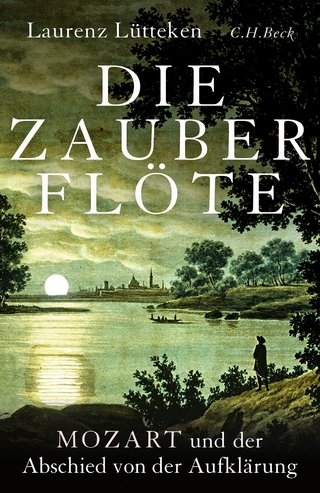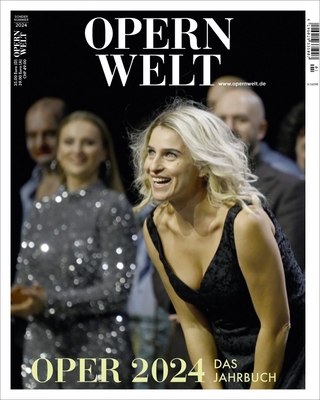
Noise as a Constructive Element in Music
Routledge (Verlag)
978-1-032-30856-2 (ISBN)
Music and noise seem to be mutually exclusive. Music is generally considered as an ordered arrangement of sounds pleasing to the ear and noise as its opposite: chaotic, ugly, aggressive, sometimes even deafening. When presented in a musical context, noise can thus act as a tool to express resistance to predominant cultural values, to society or to socioeconomic structures (including those of the music industry). The oppositional stance confirms current notions of noise as something which is destructive, a belief not only cherished by hard-core rock bands but also shared by engineers and companies developing devices to suppress or reduce noise in our daily environment.
In contrast to the common opinions on noise just described, this volume seeks to explore the constructive potential of noise in contemporary musical practices. Rather than viewing noise as a ‘defect’, this volume aims at studying its aesthetic and cultural potential.
Within the noise music study field, most recent publications focus on subgenres such as psychedelic post-rock, industrial, hard-core punk, trash or rave, as they developed from rock and popular music. This book includes work on avant-garde music developed in the domain of classical music as well. In addition to already well-established (social) historical and aesthetical perspectives on noise and noise music, this volume offers contributions by music analysts.
The Open Access version of this book, available at http://www.taylorfrancis.com, has been made available under a Creative Commons [Attribution-Non Commercial-No Derivatives (CC-BY-NC-ND)] 4.0 license.
Mark Delaere is Professor in Musicology at the University of Leuven. His research covers music from the twentieth and twenty-first centuries, with a special focus on the interaction between analysis, history, theory and aesthetics. Book publications include Funktionelle Atonalität (1993), New Music, Aesthetics and Ideology (ed. 1995), Rewriting Recent Music History. The Development of Early Serialism 1947–1957 (ed. 2011) and the bilingual edition (German, English) of the complete correspondence between Karlheinz Stockhausen and Karel Goeyvaerts (2017, together with Imke Misch). He is currently leading the research project on noise music at the University of Leuven.
Introduction: The Blessings of Noise Music, PART I : The Joys of Noise: Historical, Theoretical, Aesthetic and Cultural Perspectives, 1. Noise Annoys, Noise is the Future: Noise in Communication and Cybernetic Theories and Popular Music Practices, 2. Save Our Noise: When Sound Out of Place Deserves Our Protection, 3. Tracing Earlines in Ethnomusicology, 4. Noise, Not Music, 5. Between Morphological Research and Social Criticism: Notes on the Aesthetics of Noise in Avant-Garde Music, PART II: Music-Analytical Case Studies, 6. Analysing Non-Score Based Music, 7. Noise in Spectral Music, 8. Is There Noise in Helmut Lachenmann’s Music? Temporal Form and Moments of Presence in the String Quartet Gran Torso, 9. The Mic as a Scalpel – Skinning the Voice in Henri Chopin’s Sound Poetry, 10. Noise as Ground in Improvised Music: The Case of Chris Corsano, 11. Stretching Musicality to the Extreme: Vertical Composition in Merzbow’s Noise Music
| Erscheinungsdatum | 05.07.2022 |
|---|---|
| Reihe/Serie | Musical Cultures of the Twentieth Century |
| Zusatzinfo | 2 Tables, black and white; 21 Halftones, black and white; 21 Illustrations, black and white |
| Verlagsort | London |
| Sprache | englisch |
| Maße | 156 x 234 mm |
| Gewicht | 453 g |
| Themenwelt | Kunst / Musik / Theater ► Musik ► Klassik / Oper / Musical |
| Kunst / Musik / Theater ► Musik ► Musiktheorie / Musiklehre | |
| ISBN-10 | 1-032-30856-7 / 1032308567 |
| ISBN-13 | 978-1-032-30856-2 / 9781032308562 |
| Zustand | Neuware |
| Informationen gemäß Produktsicherheitsverordnung (GPSR) | |
| Haben Sie eine Frage zum Produkt? |
aus dem Bereich


